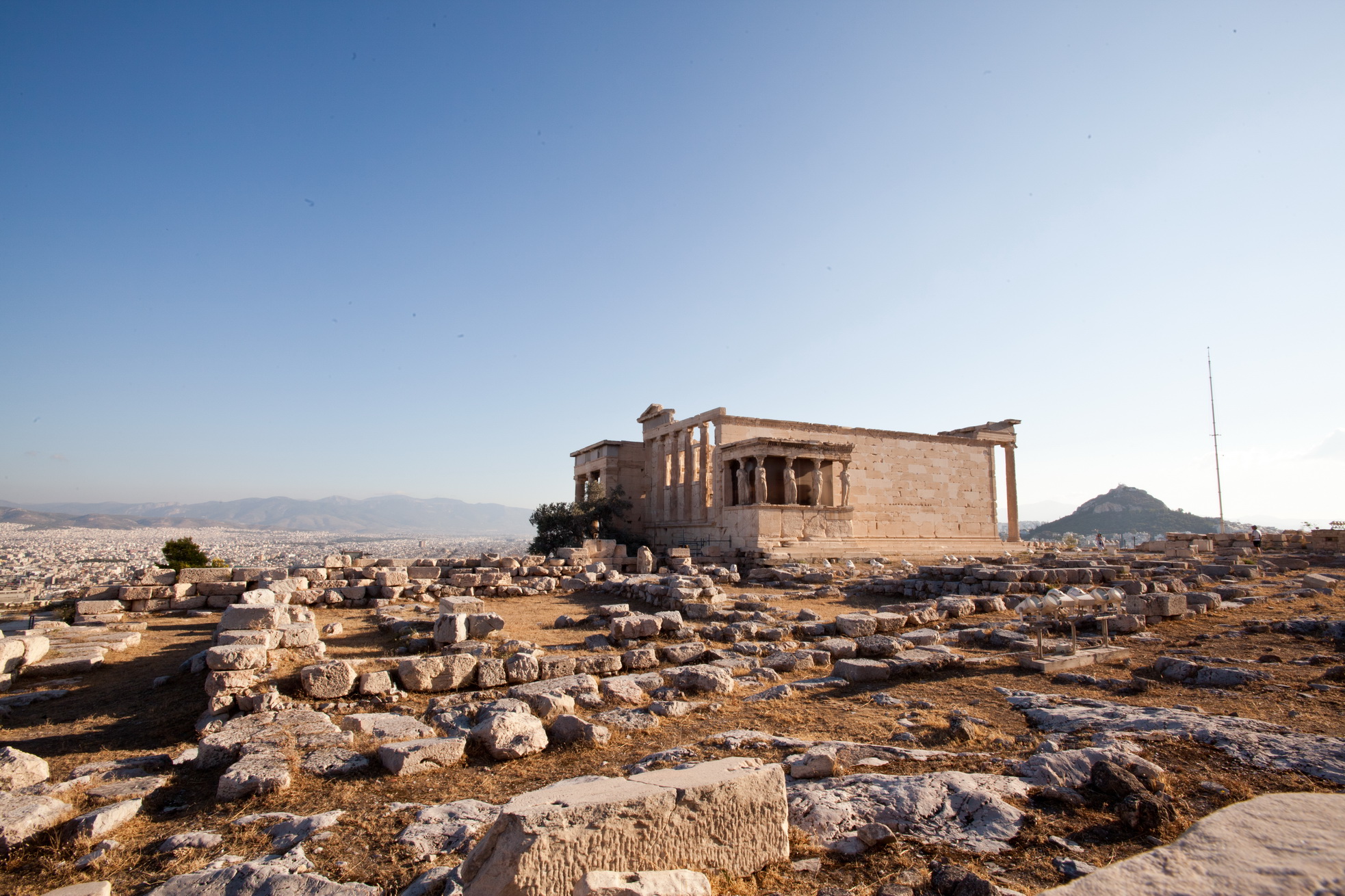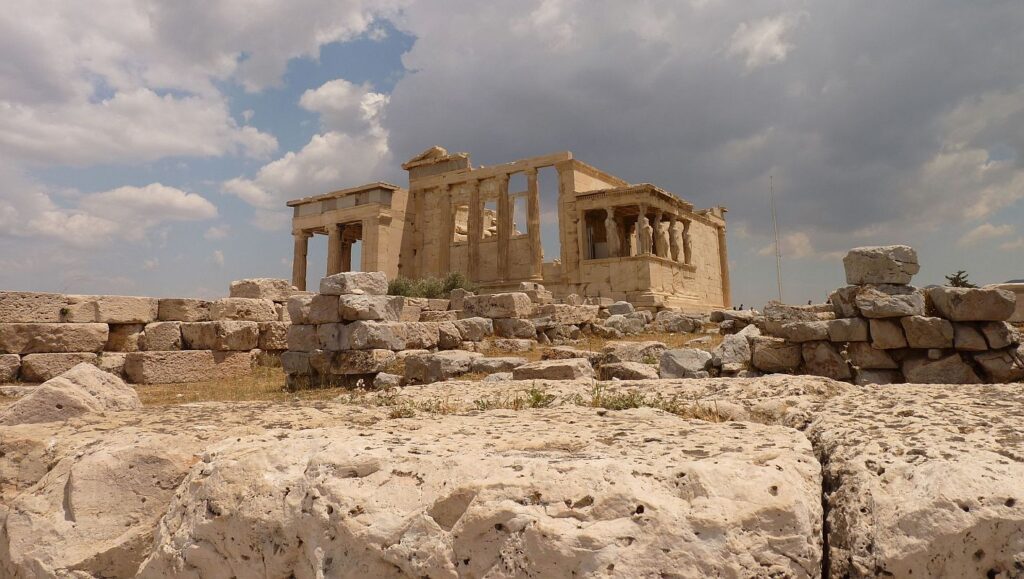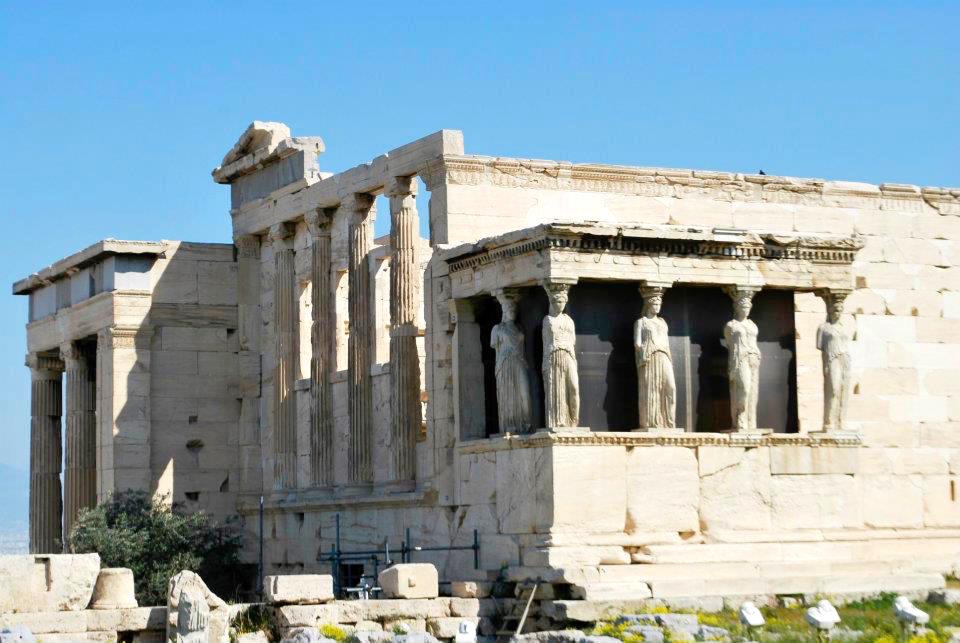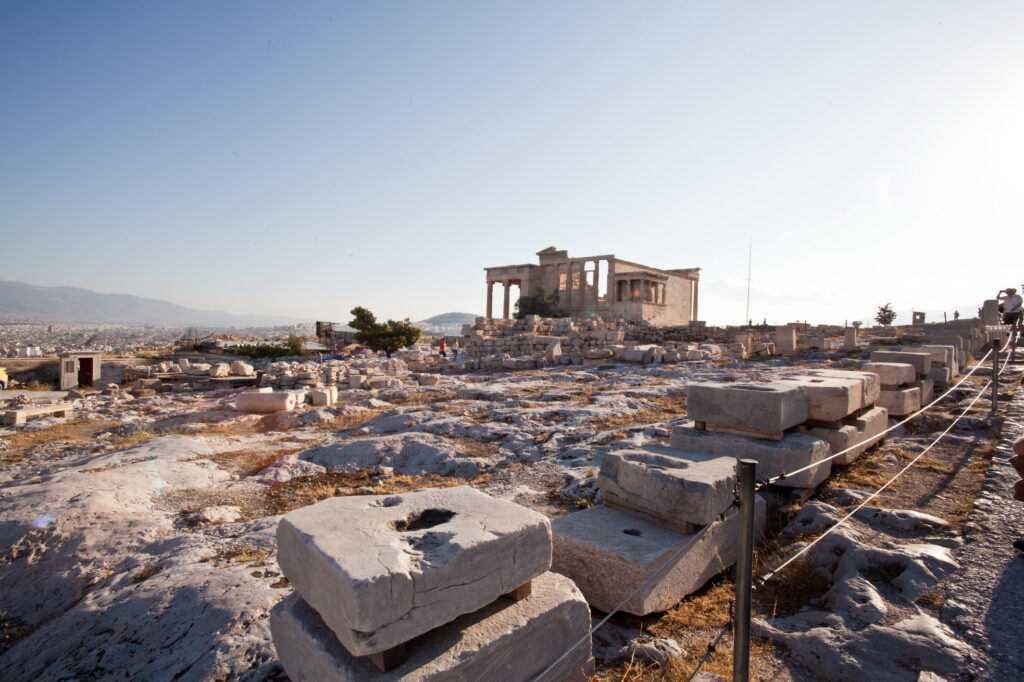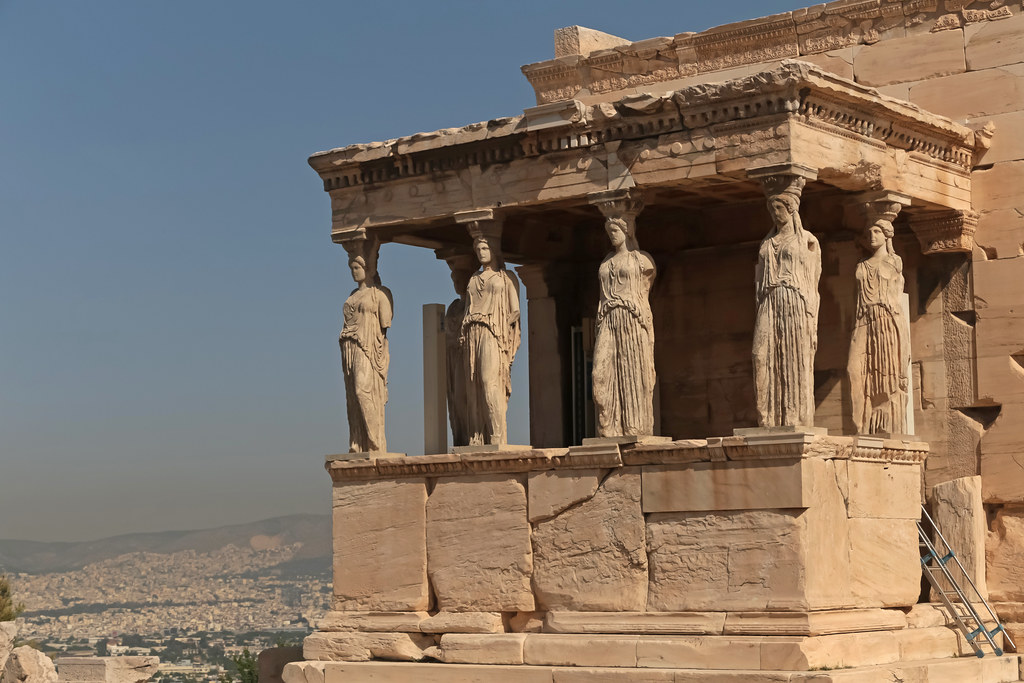he Old Temple of Athena was an Archaic temple located on the Acropolis of Athens between the Older Parthenon and Erechtheion, built around 525–500 BC, and dedicated to Athena Polias, the patron deity of the city of Athens. It was destroyed by the Persians in 480 BC, during the Destruction of Athens. It was located at the center of the Acropolis plateau, probably on the remains of a Mycenaean palace. The complex is sometimes described by the name “Dörpfeld foundations”, after the archaeologist who found the location of the temple. It was referred to as “Archaios Naos” (Old Temple) by the Greeks.
Description
Temple Plan
Foundations of the Old Temple of Athena, in front of the Erechtheion. It was destroyed by the armies of Xerxes I during the Achaemenid destruction of Athens, in 480-479 BC.Foundations of the Old Temple of Athena.Old Temple of Athena (restored).Floor plan of Old Temple Of Athena. Location of Old Temple Athena is #2.
The foundations suggest the following basic description: the temple measured 21.3 by 43.15 m. It was surrounded by a peristasis of 6 by 12 columns. The difference between column axes was 4.04 m, narrowed by 0.31 m at the corners. The Stylobate was slightly curved, whether this also applied to the superstructure remains unclear. In both the pronaos and opisthodomos, two columns stood between short antae. The main building had two inner sanctums, the east cella and the west cella,[1] which was very short, in fact nearly square, and subdivided into three aisles by two rows of three columns each. It was followed by a pair of side-by-side rooms. The foundations were composed of various materials and constructed in varying techniques. While the load-bearing parts and internal supports were made of blue Acropolis limestone, the foundations of the surrounding peristasis were of Poros limestone. The superstructure and decorative pieces also appear to have been made from a variety of materials, including Poros and Parian marble.
Sculpture
Pediments
The old temple of Athena had two Poros pediments, around 15 m. in length. The surviving pediment depicts Gigantomachy, the struggle between Gods and Giants, eventually won by the Gods. The central figure depicts the goddess Athena wearing an aegis covered with scales and edged by snakes obtained from a monster she previously defeated. She is thought to hit a falling Giant, whose foot is the only remain. Scholars believe that this pediment originally contained a frontal chariot in the center with four horses and Zeus inside one of the chariot, pointing an arrow in the direction of Athena. This images also shows Athena holding a snake and reaching out to a giant.
Another figure features a lying giant, whereas two side figures, one was positioned at the corners of the pediment, depict two more falling giants. Other remains ascribed to the temple include an entablature and sima of Parian marble and Poros limestone, capitals with a steep echinus, a marble sculpture depicting a procession, and marble waterspouts in each of the four corners, shaped like lions’ and rams’ heads.
Xoanon
The main building of the temple had two parts, one of the spaces in the east Cella contained the ancient Xoanon or wooden statue of Athena, believed to have fallen from the sky, or from Zeus. The statue was probably taken to the Athenian fleet (‘the wooden wall’) and was therefore not destroyed when the Persians destroyed the old Temple of Athena Polias in 480 BC. It was eventually housed in the new temple of Athena Polias – the Erechtheion. The Xoanon statue was made out of olive-wood
